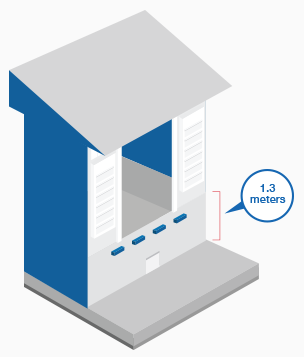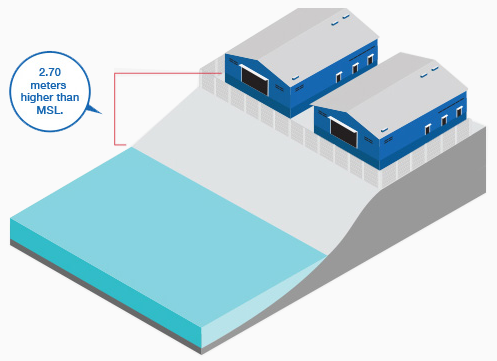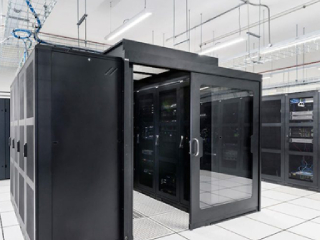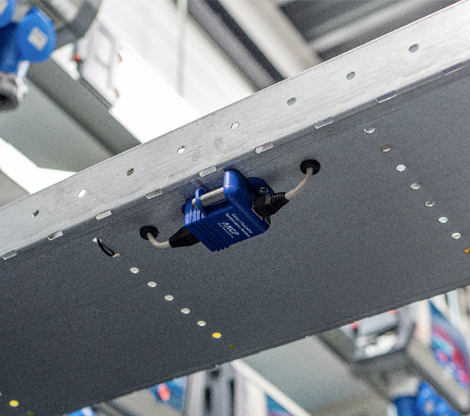Warehouse Flood Prevention – Preventing Water Damage in your Warehouse
Warehouses are by nature gargantuan structures. Designed to hold large amounts of product and inventory, the value of which can be huge. Unfortunately, in many cases, they are not properly maintained or inspected. This means that leaks can spring or roofs can fail. There are a number of problems that can arise which allow water to gain access to your warehouse.

In some cases, such as where a facility does not have a full-time staff, leaks may go undetected for long periods. Days, Weeks, or even Months can pass. When discovered there can already be significant water damage to the structure and stored products.
Water can damage the warehouse structures in a number of ways. Roofs compromised as the result of torrential rainfall, as well as the weight piled on by snow or ice. In some cases, the partial or total collapse of the roof may occur. This leaves the interior of the warehouse wide open to the elements. Further internal water damage then takes place as well as product damage.
 Image courtesy of https://komonews.com/archive/seattle-area-warehouse-roof-collapses-in-rain
Image courtesy of https://komonews.com/archive/seattle-area-warehouse-roof-collapses-in-rain
Water can gain access to the structures electrical wiring and HVAC systems. This causes a partial or total breakdown of those systems with costly repairs. The systems will be offline until approved for use by a qualified technician.
Structural damage is the highest cost of warehouse water damage. The effects on stored material is a close second. Materials stored in warehouses are the lifeblood of the parent company. Damage or destruction of those materials has an economic impact. How large that impact depends on the scope of damage, and value of goods.
If the warehouse is the company’s only location for stored materials, it will have a far greater impact on the capability to do business than if the company has multiple warehouses.
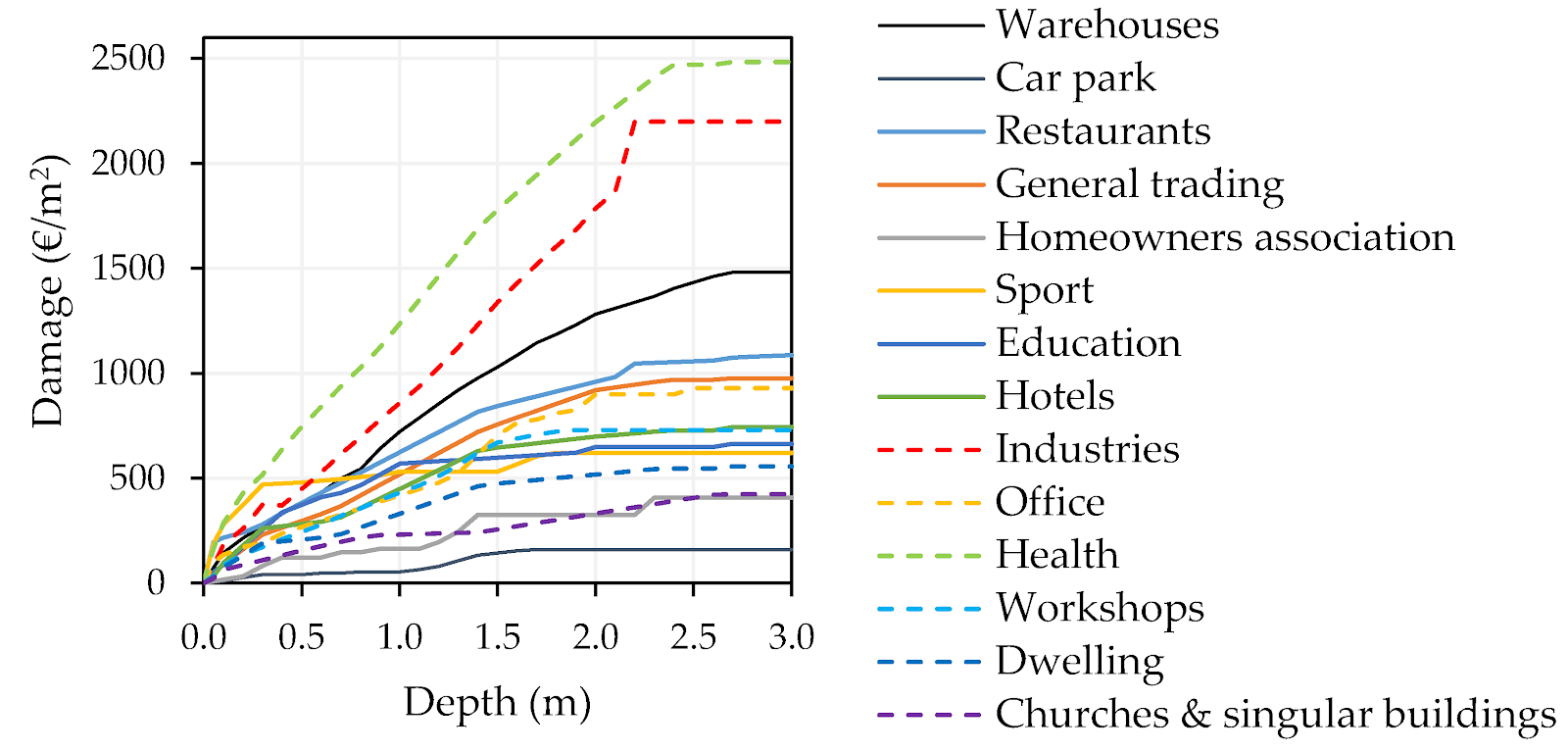
The above chart shows the depth in meters of flooding compared to the damage costs per industry. Warehouses are the third worst hit facility when it comes to flooding.
In addition, the warehouse administrative wing may be damaged as a result of the water. In this case, there may be loss of important files, inventory records, truck schedules, orders, customer databases and employee records. If there is no off-site backup provision the data can be irreplaceable or take considerable effort to replace. Warehouse employees may see schedules curtailed or cancelled altogether, depending on how long it takes to fix the damage.
Content credit courtesy of: RestorationSOS Educational Staff
Example of Extreme Flooding Scenario – 2011 Thailand Flood
In 2011, Thailand witnessed its worst flooding in half a century, leaving severe impairments to the country’s economy. Factors that contributed to the flood crisis range from natural to man-made. Floodwaters inundated more than two-thirds of the country. It ranked as the world’s fourth costliest disaster as of 2011. (Geo-Informatics and Space Technology Development Agency)
Cause
Due to its tropical savanna climate, Thailand is vulnerable to flooding during the monsoon season. The accumulated precipitation from January to October 2011 was 35% higher than average, a consequence of La Niña. The phenomenon results in lower ocean surface temperatures causing earlier than expected monsoon rains.
Heavy rainfall raised the levels in waterways. These overflowed flooding to adjoining areas. Large volumes of water entered the Bhumibol and Sirikit dams exceeding their capacity. High tides and storm surge in the Gulf of Thailand during the months of October and November also raised the water levels.

Impact
The flood impacted a total of 4,039,459 households and 13,425,869 people. 2,329 houses were completely destroyed, while 96,833 houses were partially damaged.
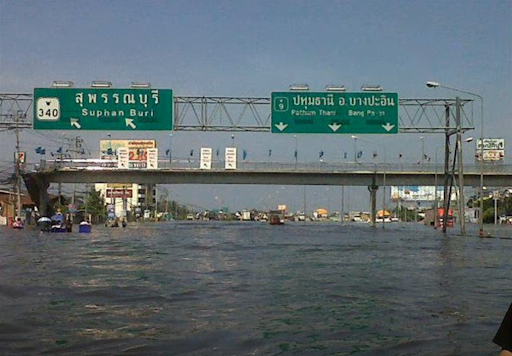
The death toll reached 657 people. As of December 2011, the World Bank estimated damages to have reached THB 1,440 billion.
Due to the effects on the industrial sector, unemployment increased as factories closed. The economy continued to be in a delicate position as the flood impact had reduced investors’ and insurance companies’ confidence. This led to an increase in unemployment and a poorer economy throughout 2012 and beyond.
Tourism, another substantial revenue in the economy, suffered a loss of THB 3.71 billion. In 2011 there was a fall of 3.2 million tourists according to the Tourism Ministry. Urgent measures have been taken, but the journey to recovery took years.
Solutions – WHA Logistics
Enactment of the following strategies will help stop such economic impact should a repeat of the flooding occur. Particularly around the economic and warehouse zones of the international airport. Warehouses took measures to prevent water damage in the future.
- Additional waterways were constructed and existing waterways were further developed. Utilizing large water-holding areas in key provincial locations. Enhancement of current water gates, floodways, and dams were improved to control of the inflow and outflow of water. WHA Logistics’ Mega Logistics Center is located close to Suvarnabhumi Canal. The canal is larger than a 4-lane road and can drain water into the sea at a rate of 8.64 million cubic meters per day. This ensures the WHA Logistics facilities are well-drained.

- The main road of any WHA Logistics project is always built at the new highway standards. The main road must not be less than 30 centimetres higher than the external road.

- WHA Logistics warehouses are built to international specifications. The warehouse floor is raised 1.30 meters.

- Before locating any WHA warehouse facilities the height Above Mean Sea Level (AMSL) is checked . Records since 2005 show an average 1.10m AMSL. The main road (+0.30 meters) and the raised floor warehouse (+1.30 meters) combined means the warehouse floor of WHA Logistics is 2.70 meters higher than the MSL.

Flood Prevention Features above courtesy of WHA Project Thailand
How can AKCP help?
Remote Access 24/7
AKCP remote monitoring systems continuously check and report conditions in your warehouse. Temperature, humidity and water leak detection are the most important for warehouses.
Wired sensors, or wireless battery powered for easy installation. Graphing and reports show data over time. Alerts notify the instant a threshold is breached.
Water damage and leakage
Using either a spot water sensor or rope water sensor, water leaks are detected and alerts sent before your warehouse is flooded. Using locate rope water sensors, the exact location of the water leaks are identified.
With Sensor controlled relays immediately shut off the water supply, preventing further leaks from burst pipes.


